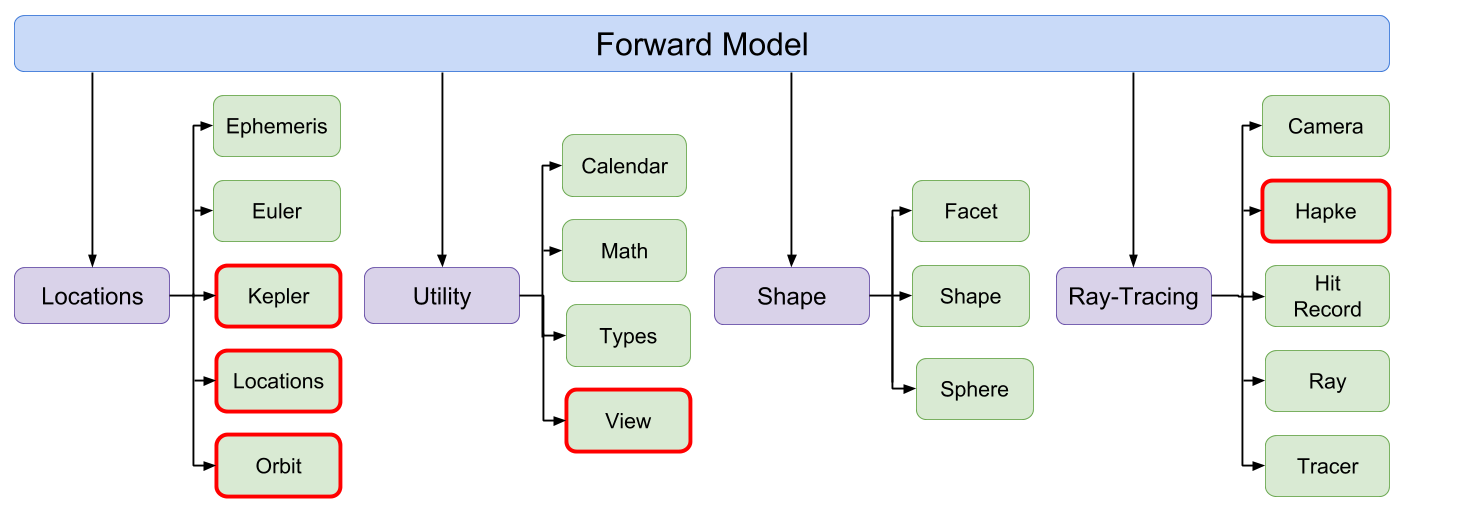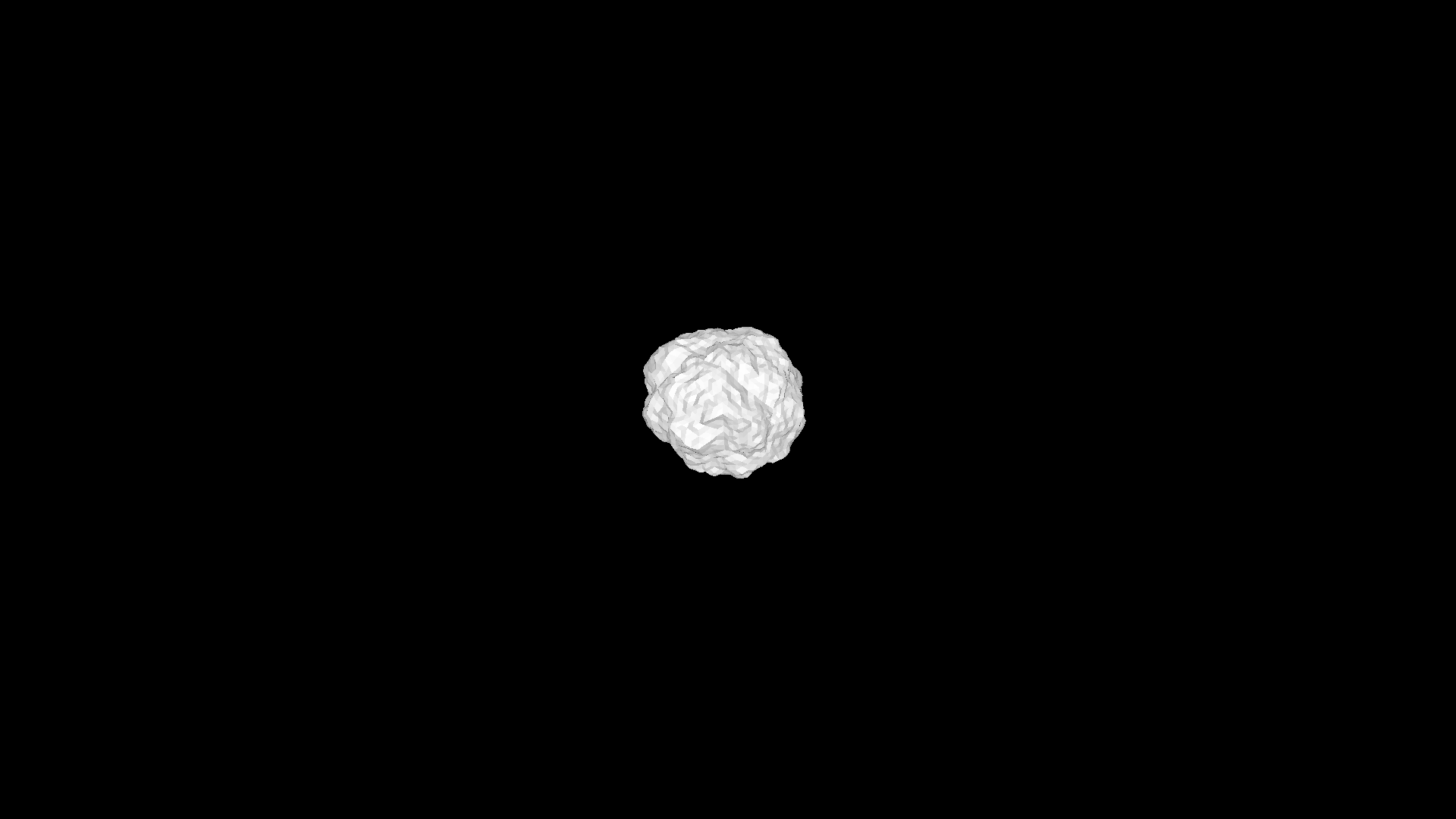Our Solution
Our C++ API is highly modular and allows for easy development and expansion. The design of our software is comprised of 4 main modules and 17 sub modules. All of the functionality of the software is encapsulated inside the forward model. The forward model uses all of the modules for each function call. The submodules highlighted in red below contain formulas that were given to our team by our clients. Those specific submodules use math specific to astronomers and have been tested for accuracy.

Our software solution can be used to render a set of images. These sets of images can be stitched together to create a movie (see below). This lets users see exactly how the software is rendering the scene. This is useful for checking work to make sure everything is inputted correctly and also for presenting work to others.

The above scene is of two objects, Sila and Nunam, in the Kuiper belt. The scene shows two faceted shapes. Faceted shapes are uploaded as a .obj file to the function and can be created by the user. This allows astronomers to render objects whose shape is known. The software also allows for Tri-axis Ellipsoids and Spheres to be generated and used. The generated shapes are faster and designed for use inside of a minimization routine.
A single workflow was used to generate the Sila-Nunam scene. The flowchart below highlights the important steps.

